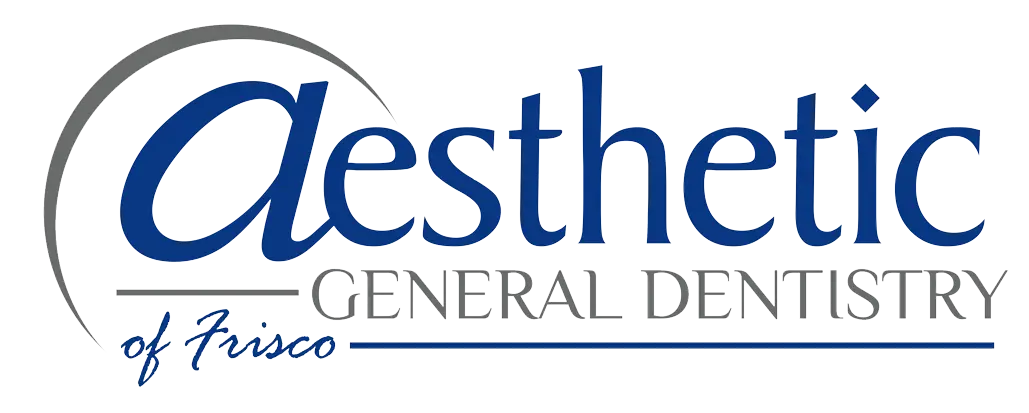Your Complete Buyer’s Guide to Bone Grafting
Have you ever wondered why dental bone grafting is such an essential part of many dental procedures? Or what exactly goes into a bone graft surgery? Look no further, because this comprehensive guide will provide you with all the information you need to know about dental bone grafting.
Dental bone grafting may not be as well-known as other dental procedures, but it plays a vital role in restoring and maintaining a healthy smile. It involves the transplantation of bone tissue to repair or rebuild the jawbone, which is crucial for supporting teeth and keeping them in place.
Bone grafting is usually required when there is not enough bone structure to support a dental implant, fill a cavity, or support teeth after injury or disease. Without proper bone density, these procedures may not be successful and could result in further complications.


common reasons for requiring a bone graft
Bones play a crucial role in supporting our bodies, and sometimes, we may need a little extra help to keep them strong and healthy. This is where a bone graft comes in. Let’s explore some common reasons why someone might need a bone graft in simple terms.
1. Tooth Troubles:
If you’re missing a tooth or need a dental implant, a bone graft might be necessary. The bone in your jaw needs to be sturdy to support the new tooth or implant properly. A graft helps by adding extra bone where it’s needed.
2. Healing Help:
Injuries and accidents can sometimes lead to bone damage. A bone graft aids in the healing process by providing extra support. It’s like giving your body a boost to repair and rebuild the damaged bone.
3. Gum Disease Effects:
When gum disease gets serious, it can affect the bone supporting your teeth. A bone graft helps restore this support, keeping your teeth in place and preventing further problems.
4. Planning for Braces:
Sometimes, before getting braces, your orthodontist might recommend a bone graft. This is because the bones in your jaw need to be in good shape to support the movement of your teeth during orthodontic treatment.
5. Aging Gracefully:
As we get older, our bones can lose density. In some cases, a bone graft might be suggested to maintain the strength of the bones, especially in the jaw.
6. Sinus Lifts:
For those considering dental implants in the upper jaw, a sinus lift might be necessary. This involves a bone graft to increase the bone height in the back of the jaw to support the implants.
Understanding these common reasons for bone grafts can help demystify the process. If your dentist suggests a bone graft, remember, it’s all about ensuring your bones have the support they need to keep you smiling and chewing comfortably.
different types of bone graft materials used in dentistry (pros & cons)
Different types of bone graft materials are utilized to facilitate this process, each with its own set of advantages and disadvantages. Understanding these materials can empower patients and dentists to make informed decisions. Let’s delve into the various types of bone graft materials and explore their pros and cons.
- Autografts:
Autografts involve using the patient’s own bone, often harvested from the hip, jaw, or tibia. This type of graft material is considered the gold standard due to its compatibility and minimal risk of rejection.
Pros:
- High success rate: Autografts integrate well with the patient’s existing bone tissue.
- Lower risk of infection: Since the material comes from the patient’s body, the risk of infection is minimal.
Cons:
- Additional surgery: Harvesting bone requires a second surgical site, leading to increased discomfort and recovery time.
- Limited quantity: The amount of available bone for grafting may be insufficient for larger procedures.
- Allografts:
Allografts use bone from human donors, carefully processed to eliminate potential infection or rejection issues. These materials are often sourced from tissue banks.
Pros:
- No additional surgery for the patient: Eliminates the need for a second surgical site.
- Availability: Allografts provide a readily available source of bone.
Cons:
- Risk of disease transmission: Despite rigorous screening, a small risk of disease transmission exists.
- Variable success rates: The integration of allografts may vary among individuals.
- Xenografts:
Xenografts involve the use of bone from animals, usually bovine (cow) or porcine (pig) sources. These materials are extensively processed to eliminate potential rejection issues.
Pros:
- Abundant supply: Xenografts offer a large and consistent supply of graft material.
- No additional surgery for the patient: Similar to allografts, there is no need for a second surgical site in the patient.
Cons:
- Risk of immune response: Despite processing, some patients may experience an immune response to the xenograft material.
- Potential for disease transmission: Although rare, the risk of disease transmission exists.
- Synthetic Bone Grafts:
Synthetic bone graft materials are laboratory-manufactured and come in various forms, such as ceramics, hydroxyapatite, and biocompatible polymers.
Pros:
- No risk of disease transmission: Synthetic materials eliminate the risk of transmitting diseases.
- Controlled composition: The composition of synthetic grafts can be precisely tailored for optimal bone regeneration.
Cons:
- Variable integration: Success rates may vary based on the specific synthetic material used.
- Limited biological activity: Some synthetic materials may lack the biological cues necessary for optimal bone regeneration.
Conclusion:
Choosing the right bone graft material in dentistry involves weighing the pros and cons based on individual patient needs, the complexity of the procedure, and the dentist’s expertise. A comprehensive discussion between patients and dental professionals can ensure informed decision-making, leading to successful outcomes in the realm of oral health and restoration.
Types of Bone Grafting Procedures
There are several types of dental bone grafting procedures, each designed to address specific oral health issues. These include:
- Socket Preservation: This procedure is performed after a tooth extraction to prevent the collapse of the surrounding bone and prepare it for future dental implant placement.
- Sinus Lift: Used in cases where there is insufficient bone height in the upper jaw, this procedure involves lifting the sinus membrane and placing bone graft material in the space created to support dental implants.
- Ridge Augmentation: This process is used to correct defects in the jawbone caused by periodontal disease or traumatic injuries, providing a stable foundation for future tooth replacement options.
- Nerve Repositioning: In cases where there is damage to the inferior alveolar nerve, this procedure can be performed to move the nerve and create space for bone grafting in the lower jaw.
Benefits and Risks of Each Procedure
Each dental bone grafting procedure has its own set of benefits and risks. Here are some potential advantages and disadvantages associated with each:
Socket Preservation
Benefits: Prevents bone loss, makes future implant placement easier, and preserves natural facial contours.
Risks: Some patients may experience swelling or discomfort after the procedure.
Sinus Lift
Benefits: Allows for successful dental implant placement, restores lost bone height, and improves facial aesthetics.
Risks: Possible complications such as sinus infections, bleeding, or nerve damage.
Ridge Augmentation
Benefits: Corrects jawbone defects, improves gum health, and creates a stable foundation for future tooth replacement options.
Risks: Possible complications such as infection or discomfort.
Nerve Repositioning
Benefits: Creates space for bone grafting in the lower jaw, restores nerve function, and allows for successful dental implant placement.
Risks: Possible complications such as numbness, swelling, or nerve damage.
Cost Considerations and Insurance Coverage
As with any medical procedure, the cost of dental bone grafting can vary depending on factors such as the type of procedure needed and your location. Generally, socket preservation is the least expensive option while sinus lifts and ridge augmentations tend to be more costly due to their complexity. Nerve repositioning is typically the most expensive option.
Insurance coverage for dental bone grafting procedures also varies, with some plans offering partial or full coverage while others may not cover it at all. It’s best to check with your insurance provider beforehand to determine what may be covered under your specific plan.
Preparing for Dental Bone Grafting Surgery
To ensure a successful bone grafting procedure, it’s important to follow your dentist’s instructions leading up to the surgery. This may include avoiding certain medications or foods, quitting smoking if applicable, and maintaining good oral hygiene.
Frequently Asked Questions
- How long does it take for a dental bone graft to heal?
The healing process can vary depending on the type of bone grafting procedure and the individual’s healing ability, but it typically takes 3-6 months for the bone to fully heal.
- Will I feel any pain during or after the surgery?
Your dentist will administer local anesthesia to numb the area during the procedure, so you shouldn’t feel any pain. Afterward, you may experience some discomfort and swelling, but your dentist can prescribe pain medication to help manage it.
- Are there any risks or complications associated with dental bone grafting?
As with any surgical procedure, there is a risk of infection and bleeding. In rare cases, the body may reject the bone graft material. Your dentist will discuss potential risks and complications with you before the surgery.
- Can I eat normally after a bone grafting procedure?
It’s best to stick to soft foods for the first few days after surgery and avoid using the side of your mouth where the bone graft was placed. Your dentist will provide specific instructions on when you can resume a normal diet.
- Is dental bone grafting worth it?
Bone grafting can help preserve jawbone structure and improve the success rate of other dental procedures, making it a valuable investment in your oral health. Your dentist can discuss the potential benefits for your specific case with you.
- Does insurance cover dental bone grafting?
Some insurances may cover a portion of the cost if the procedure is deemed medically necessary. It’s best to check with your insurance provider beforehand and discuss payment options with your dentist.
- How do I find a qualified dentist for a bone grafting procedure?
When looking for a dentist, be sure to research their qualifications and experience in performing dental bone grafting. You may also ask for recommendations from friends, family, or your regular dentist.
- How can I prepare for my dental bone grafting surgery?
Your dentist will provide specific pre-operative instructions, but in general, it’s best to avoid smoking, alcohol consumption, and certain medications before the surgery. Be sure to follow all instructions carefully for a successful procedure.
- Will I need pain medication after the bone grafting procedure?
Pain and discomfort can be managed with over-the-counter or prescription pain medication as prescribed by your dentist. In some cases, antibiotics may also be prescribed to prevent infection.
Dental bone grafting is a valuable procedure that can help preserve jawbone structure and improve the success rate of other dental treatments.
Understanding the common reasons for needing a bone graft, different types of graft materials, and potential benefits and risks associated with each procedure can help you make an informed decision regarding your oral health. As always, be sure to consult with your dentist for personalized advice and proper preparation for your dental bone grafting surgery.
So, don’t hesitate to schedule an appointment with a qualified dentist to discuss your options and improve your overall oral health. Remember, prevention is always better than cure when it comes to maintaining a healthy smile! So take care of your teeth and they will take care of you!
Your email is safe with us. We respect your privacy and will only use your email to send you the requested guide and occasional relevant updates.
